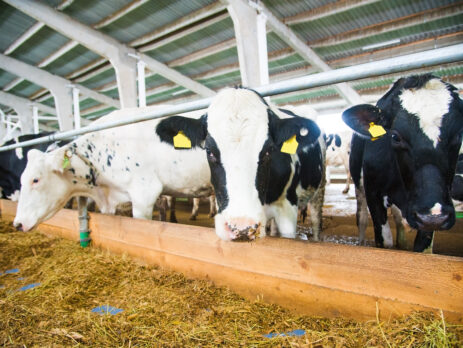Detecting dangers in dairy: What gases should you be aware of?
Global demand for dairy continues to increase in large part due to population growth, rising incomes and urbanisation. Millions of farmers worldwide tend approximately 270 million dairy cows to produce milk. Throughout the dairy farm industry there are a variety of gas hazards that pose a risk to those working in the dairy industry.
What are the dangers workers face in the dairy industry?
Chemicals
Throughout the dairy farm industry, chemicals are used for variety of tasks including cleaning, applying various treatments such as vaccinations or medications, antibiotics, sterilising and spraying. If these chemicals and hazardous substances are not used or stored correctly, this can result in serious harm to the worker or the surrounding environment. Not only can these chemicals cause illness, but there is also a risk of death if a person is exposed. Some chemicals can be flammable and explosive whilst others are corrosive and poisonous.
There are several ways to manage these chemical hazards, although the main concern should be in implementing a process and procedure. This procedure should ensure all staff are trained in the safe use of chemicals with records being maintained. As part of the chemical procedure, this should include a chemical manifest for tracking purposes. This type of inventory management allows for all personal to have access to Safety Data Sheets (SDS) as well as usage and location records. Alongside this manifest, there should be consideration for the review of current operation.
- What is the current procedure?
- What PPE is required?
- What is the process for discarding out of date chemicals and is there is a substitute chemical that could pose less of a risk to your workers?
Confined Spaces
There are numerous circumstances that could require a worker to enter a confined space, including feed silos, milk vats, water tanks and pits in the dairy industry. The safest way to eliminate a confined space hazard, as mentioned by many industry bodies, is to employ a safe design. This will include the removal of any need to enter a confined space. Although, this may not be realistic and from time to time, cleaning routines need to take place, or a blockage may occur, however, there is a requirement to ensure there is the correct procedures to address the hazard.
Chemical agents when used in a confined space can increase the risk of suffocation with gases pushing out oxygen. One way you can eliminate this risk is by cleaning the vat from the outside using a high-pressure hose. If a worker does need to enter the confined space, check that the correct signage is in place since entry and exit points will be restricted. You should consider isolation switches and check that your staff understand the correct emergency rescue procedure if something were to happen.
Gas Hazards
Ammonia (NH3) is found in animal waste and slurry spreading on farming and agricultural land. It is characteristically a colourless gas with a pungent smell that arises through the decomposition of nitrogen compounds in animal waste. Not only is it harmful to human health but also harmful to livestock wellbeing, due to its ability to cause respiratory diseases in livestock, and eye irritation, blindness, lung damage, alongside nose and throat damage and even death in humans. Ventilation is a key requirement in preventing health issues, as poor ventilation heightens the damage caused by this gas.
Carbon dioxide (CO2) is naturally produced in the atmosphere; although, levels are increased through farming and agricultural processes. CO2, is colourless, odourless, and is emitted from agricultural equipment, crop and livestock production and other farming processes. CO2 can congregate areas, such as waste tanks and silos. This results in oxygen in the air to be displaced and increasing the risk of suffocation for animals and humans. Sealed silos, waste and grain storage spaces are specifically dangerous as CO2 can accumulate here and lead to them being unsuitable for humans without an external air supply.
Nitrogen dioxide (NO2) is one of a group of highly reactive gases known as oxides of nitrogen or nitrogen oxides (NOx). At worst, it can cause sudden death when consumed even from short term exposure. This gas can cause suffocation and is emitted from silos following specific chemical reactions of plant material. It is recognisable by its bleach-like smell and its properties tend to create a red-brown haze. As it gathers above certain surfaces it can run into areas with livestock through silo chutes, and therefore poses a real danger to humans and animals in the surrounding area. It can also affect lung function, cause internal bleeding, and ongoing respiratory problems.
When should gas detectors be used?
Gas detectors provide added value anywhere on dairy farms and around slurry silos, but above all:
- When and where slurry is being mixed
- During pumping and bringing out slurry
- In the stable during maintenance work on slurry pumps, slurry scrapers and the like
- Near and around small openings and cracks in the floor, e.g., around milking robots
- Low to the ground in poorly ventilated corners and spaces
